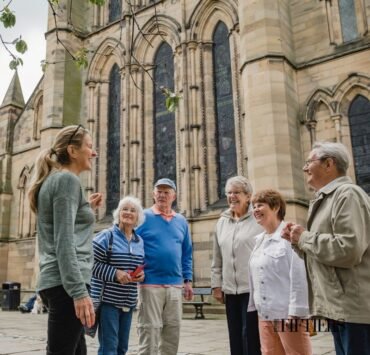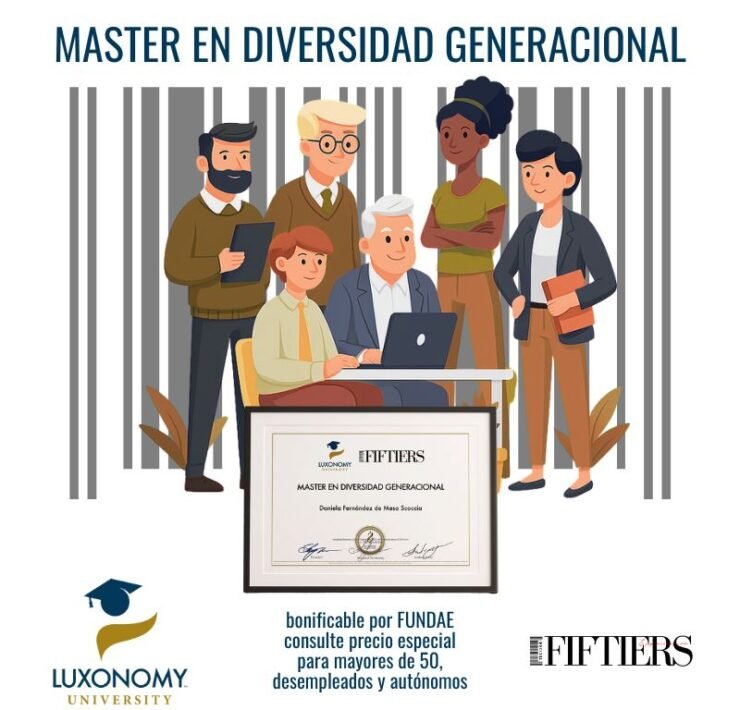Ageism: The Silent Epidemic

FIFTIERS | Life Begins at 50. La vida comienza a…
In 1969, gerontologist Robert Butler coined the term “ageism” (from English ageism) to describe negative stereotypes, prejudices, and discrimination based on age. Recent research confirms that this form of discrimination is far more widespread than we think, even surpassing other more recognized types of discrimination like sexism or racism. According to the World Health Organization (WHO), an estimated one in two people globally holds ageist prejudices against older adults, highlighting the magnitude and relevance of this issue.
What is Ageism and How Does It Manifest?
Ageism involves prejudices and discriminatory behaviors based solely on a person’s age. It manifests at three main levels:
-
Institutional Ageism: Occurs in laws, policies, and institutional practices that systematically harm certain age groups, such as forced retirements.
-
Interpersonal Ageism: Reflected in everyday interactions through jokes, derogatory comments, or condescending treatment of individuals due to their age.
-
Self-Ageism: People internalize negative stereotypes about their own age, profoundly affecting their self-esteem and self-perception.
Explicit vs. Implicit Ageism
Ageism can manifest explicitly or implicitly. Explicit ageism involves overt, conscious actions or expressions, like openly refusing to hire people over 50. In contrast, implicit ageism occurs subtly and unconsciously, reflected in everyday attitudes such as speaking in a childlike manner to an older person or using terms like “senior moment” to trivialize everyday forgetfulness.
Ageism in the Workplace
A 2024 survey of nearly 1,900 professionals revealed alarming figures about age discrimination at work: 82% claimed to have perceived age discrimination, and 59% stated that older workers receive fewer development opportunities than younger colleagues. Interestingly, despite this reality, 93% believe generational diversity is essential and beneficial for organizations. This highlights the contradiction between what companies recognize as ideal and what they actually implement in their practices.
Ageism in Educational Contexts
Age discrimination is also observed in educational settings. Older adults are often excluded or underestimated in their learning capacity, being denied access to refresher courses or continuing education. Likewise, young teachers may be dismissed due to their youth, while older educators face the mistaken perception of academic obsolescence.
Ageism in the Media
Media often perpetuates generational stereotypes. Older adults typically appear in highly stereotyped roles (frail elderly, endearing grandparents), invisibilizing their diversity and capabilities. Conversely, youth are frequently portrayed with clichés of immaturity or irresponsibility, perpetuating prejudices that affect their public image and job opportunities.
Consequences of Ageism
The impacts of ageism are profound at both individual and societal levels. Individually, it leads to loss of self-esteem, depression, social isolation, and accelerated cognitive decline. Studies show that older adults with negative views about aging live 7.5 years less on average than those who maintain a positive attitude toward their own age. Societally, ageism leads to wasted talent, increased social and healthcare costs, and the erosion of intergenerational solidarity, creating fragmented societies.
Strategies and Solutions Against Ageism
Combating ageism requires comprehensive interventions:
-
Legislative and Public Policies: Strengthen explicit bans on age discrimination and promote active policies to keep older adults employed and improve youth employability.
-
Education and Awareness: Drive educational campaigns that dismantle stereotypes and promote positive, realistic perceptions of all ages.
-
Promoting Intergenerational Contact: Encourage reverse mentoring programs and activities facilitating positive interaction between youth and older adults to foster mutual respect and break down prejudices.
-
Organizational Transformation: Companies must implement age management protocols, regular discrimination audits, and inclusive practices that value all generations equally.
-
Active Participation of Older Adults: Include older adults in decision-making and promote their empowerment so they become active role models challenging prejudices.
Ageism, though often invisible, constitutes a significant barrier to building inclusive and equitable societies. Recognizing its existence and taking active measures to counter it is crucial to fully harness the potential offered by all generations.
Discover more from FIFTIERS
Subscribe to get the latest posts sent to your email.















